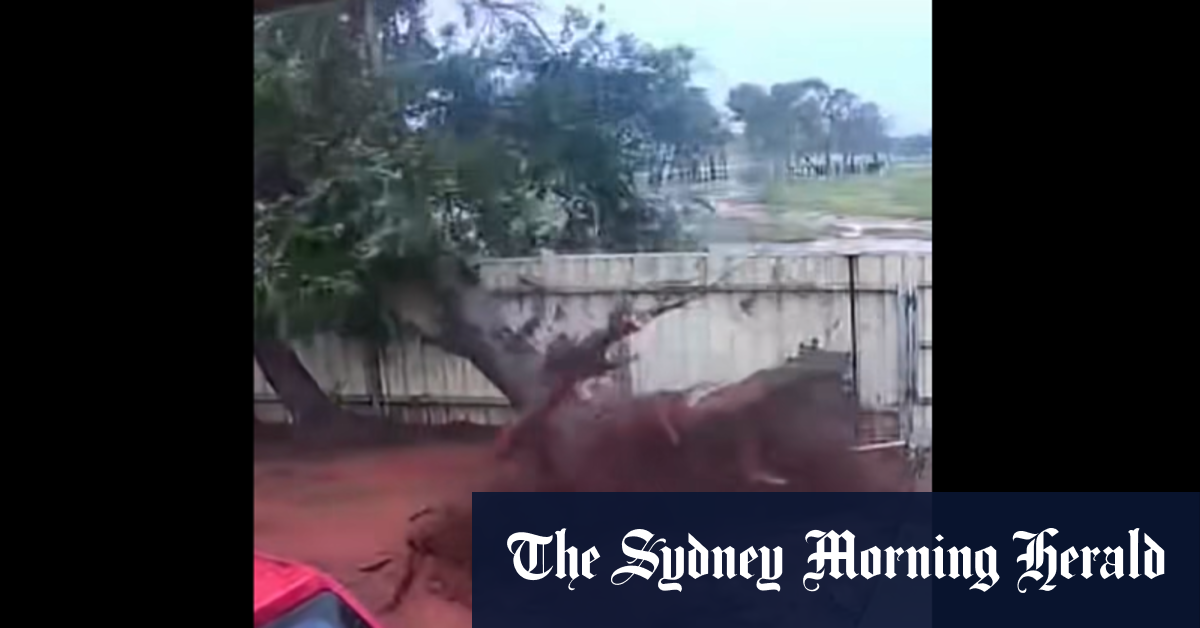Australia
Cattle station takes direct hit from Cyclone Zelia but minor damage elsewhere

Cyclone Zelia’s Impact and the Road to Recovery
The aftermath of Cyclone Zelia has left a trail of challenges for communities in Western Australia, particularly in the Pilbara region. As the storm made landfall, it brought with it powerful winds and relentless rainfall, disrupting daily life and causing significant damage to infrastructure. Despite the chaos, there is a sense of relief that the situation could have been much worse. Authorities have been working tirelessly to assess the damage and implement repair efforts, ensuring that essential services are restored as quickly as possible. The Great Northern Highway and other major roads remain closed due to flooding, but officials are hopeful that these routes will reopen soon. For now, the focus is on supporting affected residents and making sure everyone has access to the resources they need during this recovery phase.
A Glimpse into the Storm’s Fury
Cyclone Zelia made landfall as a category 4 system, packing wind gusts of up to 270 kilometers per hour. The storm’s center hit about 50 kilometers east of Port Hedland, near the mouth of the De Grey River. One of the hardest-hit locations was the De Grey Cattle Station, a remote homestead that suffered significant damage. Mark Bettini, the station’s owner and manager, shared a heartfelt update on social media, expressing gratitude for the safety of his family and staff while acknowledging the challenges they now face. "We have had a fair bit of damage, but we are also very lucky," he wrote. The station experienced cattle losses and damage to buildings, a stark reminder of the storm’s power. Bettini’s message also highlighted the resilience of those affected, as they begin the process of rebuilding and recovering.
Record Rainfall and Flooding
The heavy rainfall associated with Cyclone Zelia has been nothing short of extraordinary. Over three days, parts of the Pilbara coast, particularly around Pardoo, received over 500 millimeters of rain, setting new records for some weather stations. This deluge of water has caused significant flooding, with areas like Upper North Pole, Marble Bar, and Telfer experiencing intense downpours. In just one hour, Telfer recorded 93 millimeters of rain, a rarity for the region. The Bureau of Meteorology has issued a broad flood watch warning for many rivers in northwestern Western Australia, with senior meteorologist Angus Hines cautioning that river levels could continue to rise over the next 24 hours. While the cyclone warning has been lifted, the severe weather warning for heavy rainfall remains in place, underscoring the ongoing risks posed by the storm’s remnants.
Community Response and Support
Despite the challenges posed by Cyclone Zelia, there are signs of hope and resilience within the affected communities. Emergency Services Minister Stephen Dawson noted that while some damage occurred, it was relatively minor compared to what could have been. "Thankfully, what we’ve seen is leaking roofs, falling trees, and fences down in Hedland," he said. "There hasn’t been major damage." This assessment is a testament to the preparedness and strength of the region’s residents. Authorities have been working closely with local communities, including Aboriginal communities in the area, some of which were evacuated as a precaution. The government is also collaborating with major supermarkets to ensure that essential supplies remain available, even as road closures persist. Additionally, plans are underway to activate the Disaster Relief Fund, providing financial support for recovery efforts.
The Path Forward
As the remnants of Cyclone Zelia move inland and continue to weaken, residents are beginning to look toward the future. The storm may have passed, but its effects will be felt for some time. Roads remain closed, floodwaters are receding slowly, and the full extent of the damage is still being assessed. However, there is a sense of determination among those affected. From the cattle station owners who are already planning repairs to the communities coming together to support one another, the spirit of resilience is strong. The government’s commitment to providing resources and assistance will be crucial in the days and weeks ahead, helping to ensure that the region can fully recover and rebuild.
A Community United
In the face of adversity, the people of Western Australia have shown remarkable strength and unity. Cyclone Zelia may have brought destruction and disruption, but it has also highlighted the best of human spirit—compassion, resilience, and a determination to overcome. As the region begins the long process of recovery, it is this spirit that will carry them through. From the emergency responders working tirelessly to restore order to the everyday citizens offering support to their neighbors, the response to Cyclone Zelia has been a powerful reminder of the importance of community. Though the road ahead will be challenging, there is hope and determination in the air, and together, the people of Western Australia will emerge stronger than ever.
-
Tech1 day ago
Canon’s New Camera Is in a Category Once Thought Practically Dead
-
Entertainment6 days ago
Khloe Kardashian Says Mom Kris Jenner ‘Gets Mad at Me’ for Wearing ‘Baggy Sweats’ Out of the House
-
Money6 days ago
Cal Newport’s Productivity Hack That Can Also Help You Escape Financial Burnout
-
Tech7 days ago
Best Internet Providers in Cincinnati, Ohio
-
Sports3 days ago
Chargers to play 2025 regular season opener in Brazil
-
Tech5 days ago
Best AirPods Max Accessories for 2025
-
World7 days ago
How to Watch USA vs. Cuba: Live Stream 2025 Concacaf U-17 Men’s Qualifiers, TV Channel
-
Politics7 days ago
Trump administration fires more than a dozen immigration judges